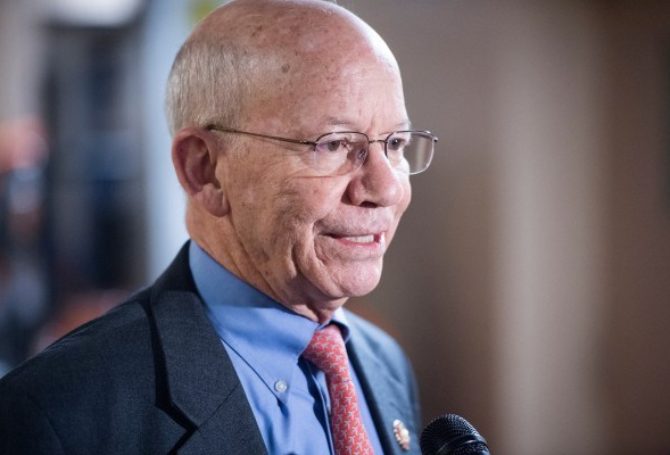
Infrastructure investment is a tried-and-true campaign talking point, but so far in 2020 it has barely received a mention in presidential stump speeches. Meanwhile, Oregon Congressman Peter DeFazio, who chairs the House Transportation and Infrastructure Committee, has teed up the conversation with a five-year, $760 billion framework for what he calls “transformative infrastructure investments.”
DeFazio’s plan contains investments in highways, transit, rail, airport, wastewater treatment, harbors, flood protection, drinking water systems, clean energy, broadband expansion, public safety and brownfield restoration.
“Our country has changed dramatically since the 1950s, yet people and goods are now literally stuck trying to move on transportation networks first developed nearly 70 years ago,” DeFazio says. “It’s past time for transformational investments to make our infrastructure smarter, safer and resilient to climate change, or else we will keep throwing money at an antiquated system that is only holding us and our economy back.”
He describes his infrastructure investment framework as “addressing the massive maintenance backlog, to designing safer streets, to putting the U.S. on a path toward zero emissions from the transportation sector and increasing resiliency.”
In a fact sheet, DeFazio calls for $329 billion for modernizing highways, including the addition of charging stations for electric vehicles, and $105 billion for transit to provide new routes and deliver more reliable service. Rail investments would total $55 billion to expand passenger rail and upgrade stations. Airports would receive $30 billion to incentivize safer travel, reduce carbon emissions and lower noise levels. Harbor investments would total $19.7 billion.
The DeFazio plan would pump $50.5 billion into wastewater treatment, $25.4 billion to address vulnerable drinking water systems and $10 billion for flood protection. The remainder would go to broadband expansion ($86 billion), clean energy such as electric grid modernization ($34.3 billion), 9-1-1 upgrades ($12 billion) and brownfield restoration ($2.7 billion).
Infrastructure improvements tend to be popular, but paying for them, not so much. DeFazio’s framework doesn’t say how funding would be generated. However, DeFazio has previously proposed “A Penny for Progress” legislation that he says will generate around $500 billion in new revenue. His idea involves issuing 30-year bonds paid for by indexing federal gas and diesel taxes. He also has proposed raising the cap on airline passenger facility charges to raise money for airport infrastructure and tapping the existing Harbor Maintenance Fund for $18 billion over the next decade.
Unless there is a downturn in the economy, chances seem dim that any major infrastructure legislation will move forward in 2020. Talks between House Democratic leaders and President Trump didn’t go well last year, and that was before impeachment proceedings. However, if the economy does turn south, there is some reason to believe both parties would want to act on an infrastructure package.
In his State of the Union address earlier this month, Trump called for a $1 trillion infrastructure plan, offset by savings from mandatory spending cuts, an approach with little political traction in Congress. His aides say he generally supports a more modest Senate transportation package that reauthorizes various transportation programs until FY2025, provides competitive grants for bridge improvements and includes climate-related grants to reduce carbon emissions and enhance resiliency. The bill also prioritizes research of animal detection systems to reduce vehicle accidents with wildlife.



